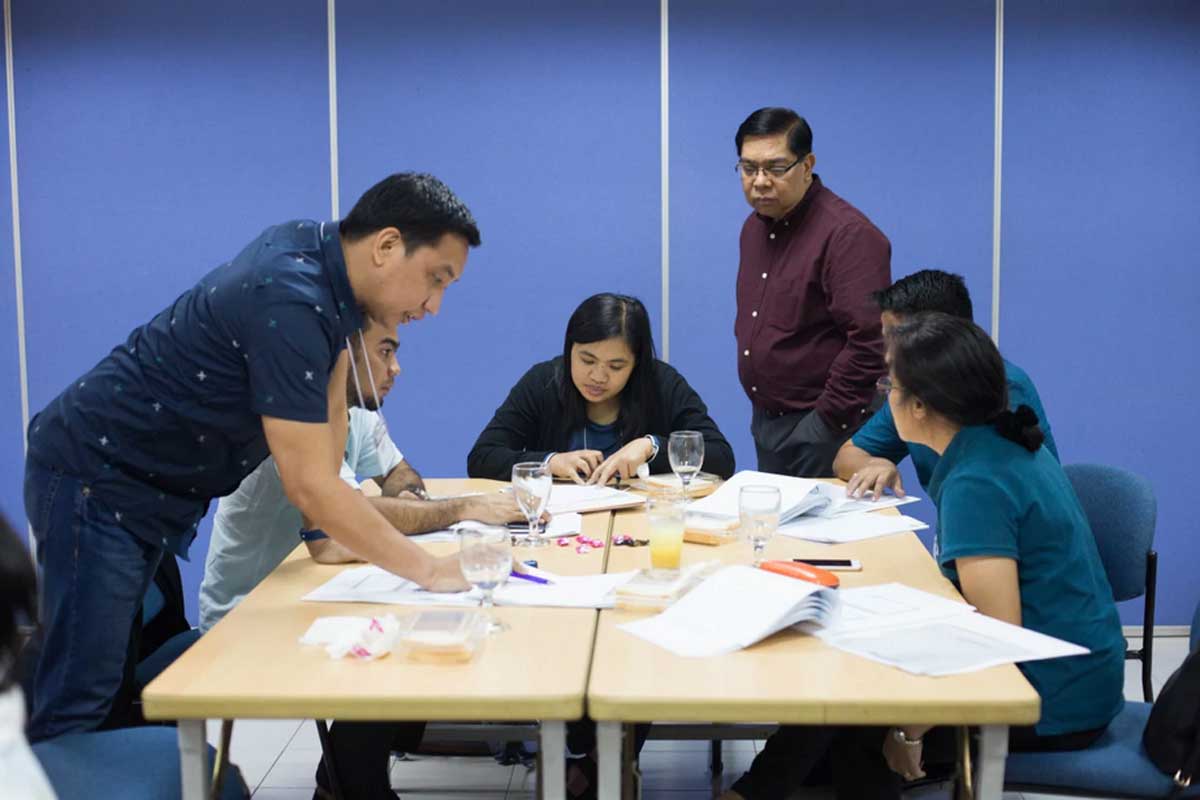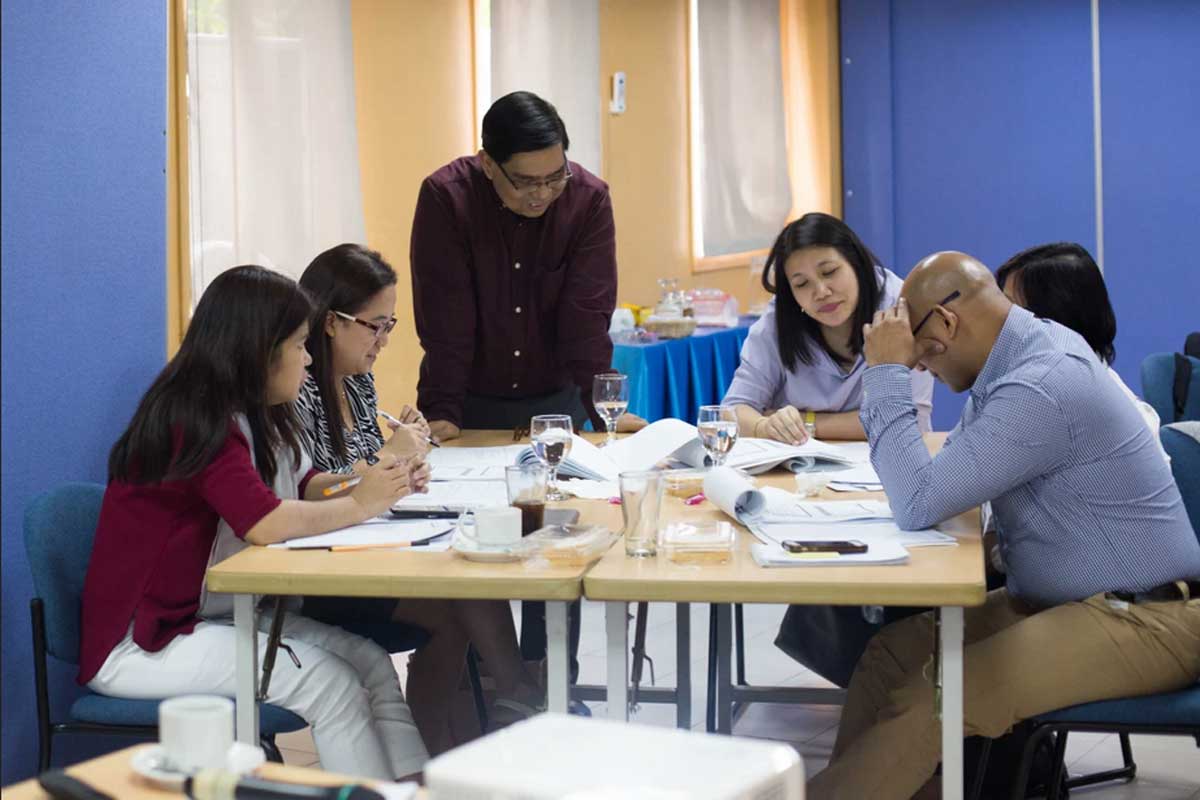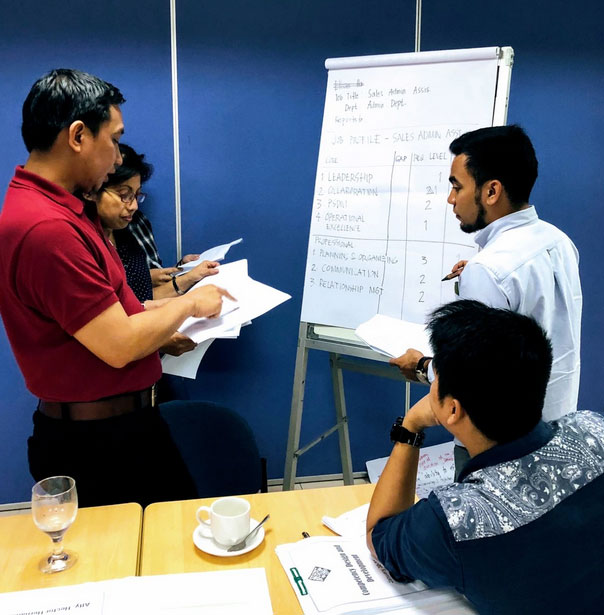
Training Services
Competency Design and Development
Designing & Building Organizational Competency Model
Developing Key Position Competency Profiles & Key Incumbent Assessment
Competency design and development helps organizations and industries stay competitive and adapt to changing circumstances.
By implementing this process, your company can identify the essential skills, knowledge, abilities, and behaviors required for successful performance in specific roles or jobs. This can help ensure that your workforce is equipped with the necessary competencies to perform their jobs well, which can lead to increased productivity, efficiency, and better outcomes.
Competency design and development also allows your organization to easily transition and adapt to new technologies, market trends, and customer needs.
Moreover, companies who invest in the growth and development of their employees are more likely to attract and retain top talent which is definitely good for business.
Competency Application / Integration into the HR System
Competency based Interviewing Techniques
Competency based Recruitment and Selection Strategy
Competency based Succession Planning
Competency based Performance Management Process
Competency based Development Strategies for High Potentials
Competency based Rewards
Integrating competencies into the different aspects and processes of Human Resource Management and Development can bring numerous benefits to your organization. This ensures that the skills, knowledge, and behaviors required for job success are properly communicated and incorporated into HR processes such as recruitment, performance management, training and development, career development, succession planning, etc.
For instance, to help the HR Department select the right candidates for specific job roles, your organization may incorporate competencies into recruitment. Similarly, incorporating competencies into performance management can help employees understand what is expected of them, receive constructive feedback, and be recognized for a job well done.
Career development opportunities can also be identified using competencies by providing employees with a clear path to advancement within the organization.
Leadership and Management
Onboarding the new Manager/Transition to New Leaders/Managers
Leading and Inspiring Remote Teams
Aligning Your Processes to the Business New Normal
Building Leadership Competencies
Developing Collaboration Workshop
Basic Management Program
Strategic Planning Workshop
Effective Interaction Skills for People Managers
Enhancing Coaching skills
Practicing Positive Discipline in the workplace for Managers
Results Management Workshop
Practicing Situational Leadership
Grievance Management for People Managers
Problem Solving/ Decision Making
Design Thinking
Project Management
Practicing Mediation Skills for conflict resolution in the workplace for Managers
Understanding the Anti Sexual Harassment in the Workplace Act of the Phils or RA 7877 mini workshop
Both leadership and management are essential components of every successful organization. While the terms are frequently used interchangeably, there are some significant distinctions between the two.
Leadership is defined as the capacity to inspire and encourage people to work toward a common vision or goal. Strategic thinkers, innovative problem solvers, and charismatic communicators are common characteristics of leaders. They are able to motivate and engage individuals to strive toward a shared goal by focusing on the larger picture.
Management, on the other hand, is the planning, organization, and control of resources in order to achieve certain objectives. Managers must ensure that tasks are performed on time and within budget, and that people work effectively and efficiently. They are in charge of day-to-day operations and putting the leadership team’s strategies into action.
In an effective organization, leadership and management work hand-in-hand to achieve shared goals.
The leadership team establishes the organization’s vision and direction, while the management team ensures that tasks are done and resources are distributed appropriately.
Sales and Marketing Development
Basic Customer Focused Selling
Advanced Customer Focused Selling
Key Accounts Management
Negotiation Skills
Plan to Grow Coaching Program
By providing your sales and marketing development team with the skills and knowledge they need to succeed, you are investing in the future of your business.
Prospecting, lead generation, sales presentations, negotiations, and closing deals are all part of the process of selling products or services to customers. Its major purpose is to produce revenue and profits by turning leads into paying clients.
Marketing, on the other hand, is the process of producing, conveying, and providing value to clients through product or service promotion and distribution. Market research, advertising, branding, public relations, and content development are processes involved in marketing. Its goal is to attract and keep customers by increasing brand recognition and loyalty, as well as, generating demand for products or services.
Supervisory
Transitioning the New Supervisor – an onboarding process
Building the Team
Basic Supervisory Program
Supervisory Day to Day Interaction Skills for supervisors
Using Positive Discipline as an Effective Supervisory Tool in the workplace
Utilizing Mediation Skills for Resolving Conflicts in the Workplace
Mental Health Awareness Training
Supervisors who receive training on how to effectively manage their teams improve their ability to delegate tasks, set clear expectations, and motivate their staff, which eventually leads to increased productivity in the workplace.
Communication
Communication Effectiveness (spoken, written, non-verbal & presentation skills)
Business English in the workplace
Effective Listening in the workplace
Managing Cultural Diversity in the workplace
Virtual Presentation Skills
Communication is a major factor that affects the success of any business or organization. It is a critical driver in increasing productivity, fostering cooperation, developing relationships internally and externally, and ensuring that goals and objectives are properly understood and accomplished.
Customer Service
Ensuring Customer Satisfaction with your clients
Practicing Commitment to Service
Customer service refers to the assistance and supports a business provides to its customers before, during, and after a purchase. It can take many forms, such as answering customer questions, addressing concerns or complaints, providing product information, and handling returns or exchanges.
Customer service is crucial for businesses because it can greatly impact customer satisfaction, loyalty, and retention. When customers have positive experiences with a company’s customer service, they are more likely to return for future purchases, recommend the company to others, and spread positive word-of-mouth. On the other hand, poor customer service can lead to lost business, negative reviews, and damage to a company’s reputation. In today’s highly competitive business environment, providing exceptional customer service is vital for companies looking to stand out from their competitors and build strong, long-lasting relationships with their customers.
Human Capital Management
Overview of Human Capital Management in Your Organization
Introduction to High Performing Work Systems
Job Evaluation & Salary Structure
Compensation Management
Understanding the HR Function for Line Managers
Labor Relations for HR and Line Managers
Human capital management (HCM) is the strategic management and development of a company’s employees. It entails a variety of tasks such as personnel recruitment and hiring, onboarding and training, performance management, talent development, and succession planning.
Employees are a company’s most valuable asset, and investing in their growth and management leads to improved organizational performance and long-term success.
Companies can increase engagement, productivity, and job satisfaction by creating a positive work environment and investing in their employees, which can have a positive impact on customer satisfaction, innovation, and profitability.
This also includes the use of technology to enhance and automate HR tasks including the maintenance of employee data, ensuring labor law compliance, and evaluating workforce data to make good business decisions.
Managing Self Programs
Reinforcing Integrity
Building Credibility
Training programs that focus on enhancing an individual’s self-awareness, self-management, and self-development skills are referred to as managing self-programs. These programs seek to help people gain the skills they need to manage themselves effectively, in both their personal and professional lives.
Managing Relationships
Working well with others
Setting Goals and Directions
Building and sustaining positive interactions and relationships between coworkers, supervisors, and subordinates is part of workplace relationship management. It requires developing effective communication, conflict resolution, and collaboration skills.
It is crucial to foster a healthy work environment, encourage open communication, and promote cooperation among teams. When relationships are strained, it can lead to stress, conflict, and decreased productivity, all of which can impair the organization’s overall success.
Interested to know more about our services? Let’s talk!
Phone
+632 8737 9128 or +632 7502 1954
Email
inquire@acciphilippines.com














